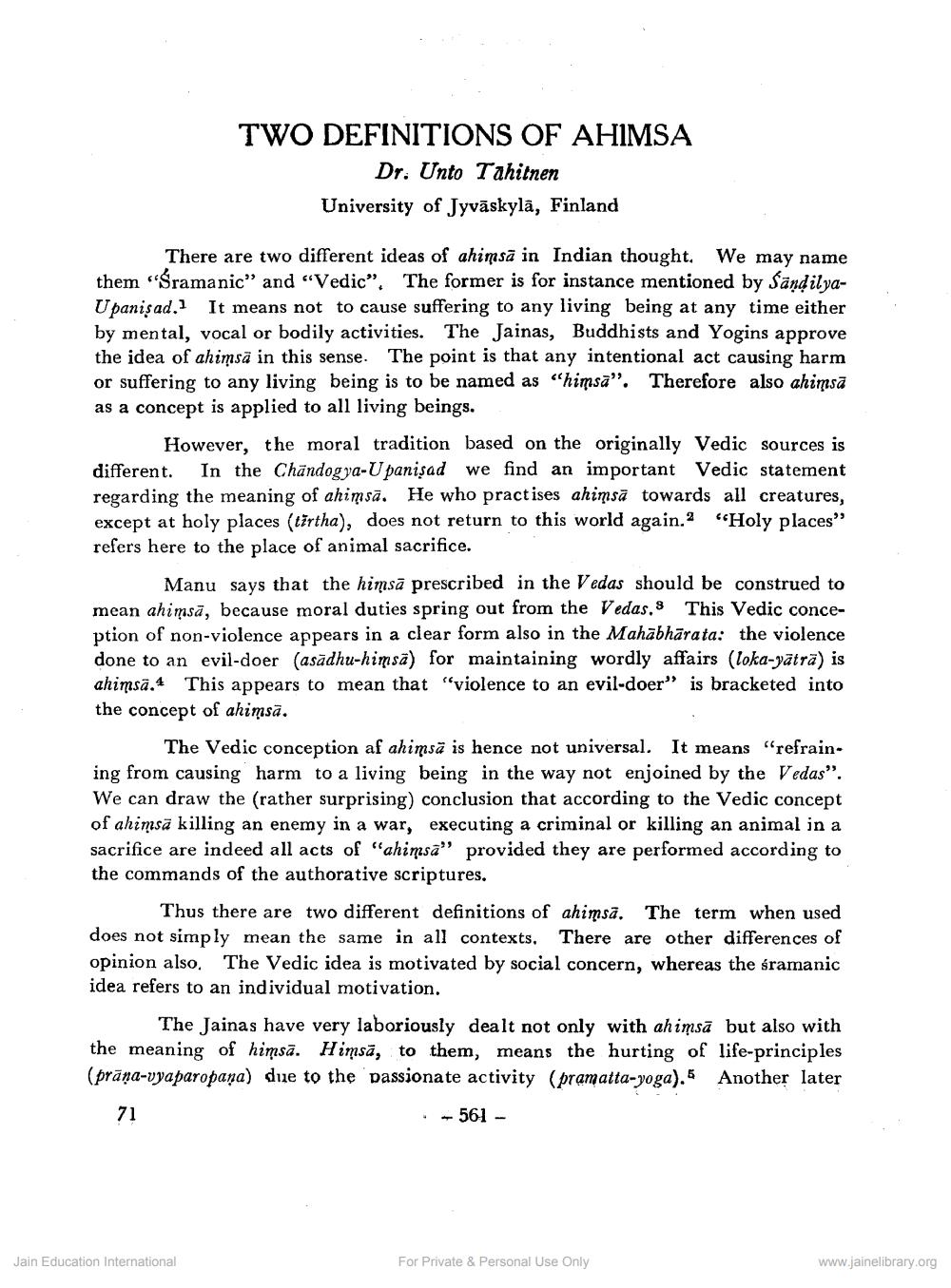________________
There are two different ideas of ahimsa in Indian thought. We may name them "Śramanic" and "Vedic". The former is for instance mentioned by SandilyaUpanisad. It means not to cause suffering to any living being at any time either by mental, vocal or bodily activities. The Jainas, Buddhists and Yogins approve the idea of ahimsa in this sense. The point is that any intentional act causing harm or suffering to any living being is to be named as "himsa". Therefore also ahimsa as a concept is applied to all living beings.
TWO DEFINITIONS OF AHIMSA Dr. Unto Tahitnen
University of Jyväskylä, Finland
However, the moral tradition based on the originally Vedic sources is In the Chandogya-Upanisad we find an important Vedic statement regarding the meaning of ahimsa. He who practises ahimsa towards all creatures, except at holy places (tirtha), does not return to this world again." "Holy places" refers here to the place of animal sacrifice.
Manu says that the himsa prescribed in the Vedas should be construed to mean ahimsa, because moral duties spring out from the Vedas, This Vedic conception of non-violence appears in a clear form also in the Mahabharata: the violence done to an evil-doer (asadhu-himsa) for maintaining wordly affairs (loka-yātrā) is ahimsa. This appears to mean that "violence to an evil-doer" is bracketed into the concept of ahimsa.
The Vedic conception af ahimsa is hence not universal. It means "refraining from causing harm to a living being in the way not enjoined by the Vedas". We can draw the (rather surprising) conclusion that according to the Vedic concept of ahimsa killing an enemy in a war, executing a criminal or killing an animal in a sacrifice are indeed all acts of "ahimusa" provided they are performed according to the commands of the authorative scriptures.
Thus there are two different definitions of ahimsa. The term when used does not simply mean the same in all contexts. There are other differences of opinion also. The Vedic idea is motivated by social concern, whereas the śramanic idea refers to an individual motivation.
The Jainas have very laboriously dealt not only with ahimsa but also with the meaning of himsa. Himsa, to them, means the hurting of life-principles (praṇa-vyaparopaga) due to the passionate activity (pramatta-yoga).
Another later
71
Jain Education International
-561
For Private & Personal Use Only
www.jainelibrary.org




